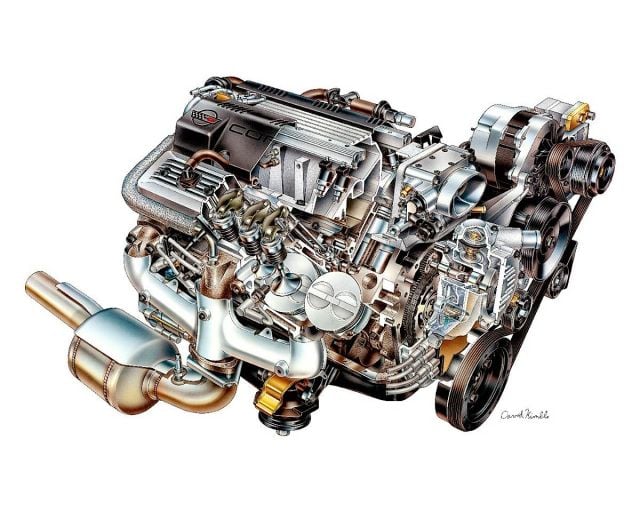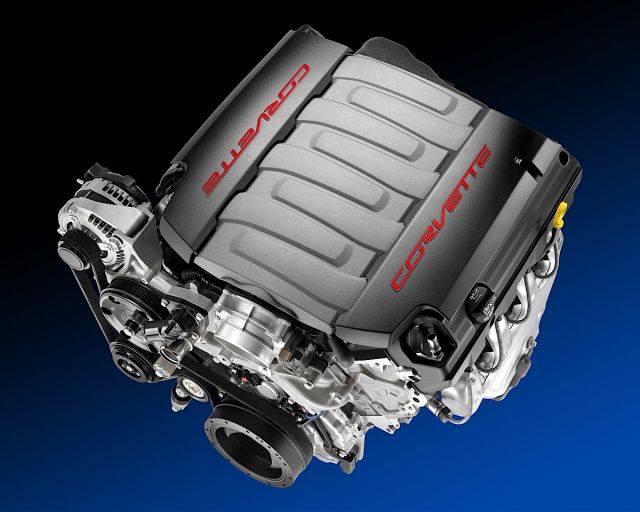There’s been considerable blogosphere buzz this week about GM’s resurrection of the LT1 engine name for the all-new Gen 5 Small Block that will power the 2014 Corvette. It’s the third time in the Small Block’s history it’s been used, the first being the 1970-72 Gen 1 version that is easily one of the top 10 Small Blocks every produced – and probably one of the top five. From a historical standpoint, that engine was dubbed LT-1 with a hyphen. The next LT1 (without a hyphen) came in 1992. It was introduced in the Corvette and exited in the 1997 Camaro Z28.
That Gen 2 version of the engine elicits admittedly mixed emotions for Chevy enthusiasts. While undoubtedly a strong performer in its day, the reverse-flow cooling system makes it somewhat of an anomaly, with limited aftermarket performance parts and options for it. And then there’s the trouble-plagued Optispark distributor. The later engines had better units, but the early LT1s definitely had ignition issues.
So, with the reintroduction of the LT1, we couldn’t help but wonder aloud how and why the name was selected. We turned to GM Powertrain spokesperson Tom Read and found the answer was interesting, but not exactly earth-shattering.
“There’s a group within GM that is charged with assigning RPO codes to engines, transmissions, etc. – whether it’s the new 2.5L Ecotec engine for the Malibu or the Corvette’s engine – and they selected it with approval from the Small Block’s chief engineer,” says Read.
“Obviously, the decision makers take heritage into account on certain new engines, like the Gen 5 Small Block, but it really boils down to a practical matter on the available designations and how they could be applied to the new engine family.”
There is a method to GM’s engine-naming convention, too. A two-character combination, i.e. “LT” or “LS” designates a specific engine family, while the number after it is a specific iteration of that family, i.e. LS3, LS7 and LS9. And even with similar engines, there are variations. The Active Fuel Management-enabled version of the LS3 in the Camaro SS/automatic models is different enough to warrant the L99 designation.
“When you look at the naming convention for the LS engines, there’s roughly a cadence to the numbers and increasing power output, starting with LS1, LS2, LS3, etc.,” he says. “Then we had the LS4 for the front-drive applications. But we also had the LS6 for the Gen 3 that was more powerful than the LS2 and LS4, so while there is a general procedure and intent, it’s not always followed linearly.”
**Read more below…
2014 LT-1 6.2L V-8 VVT DI (LT1) engine block with the newly designed LT1 badging.
In other words, rules were made to be broken. And what about the L99 and LSA names? And Shouldn’t the LSA have been called the LS8?
“Good questions – and we probably don’t have better answers than those codes were assigned by the RPO naming group for probably no specific reason,” says Read. “They use the codes that are available and as more versions of the LS family appeared, some variations were required.”
If you’ve been paying attention over the years, you’ve noticed that all of GM’s engine codes start with L, while all the transmission RPOs start with M. Suspension packages all start with Z. There are no more hyphenated designations, either, which is why the new LT1 is not LT-1 – although there was a strong push internally for the hyphen, according to Read. Only in the case of the Small Block engine, however, did anyone outside of the RPO naming group have input on a new code name. For you bread-and-butter Ecotecs and V-6s, the RPO group names them and that’s that.
“The LS series was retiring and the LT designation had heritage that made sense for the Small Block, which has been around for nearly sixty years,” says Read. “The new engine could have easily been name LG1 or LD1 or something like that, but that just wouldn’t have seemed right for a new Small Block and the next Corvette.”





















